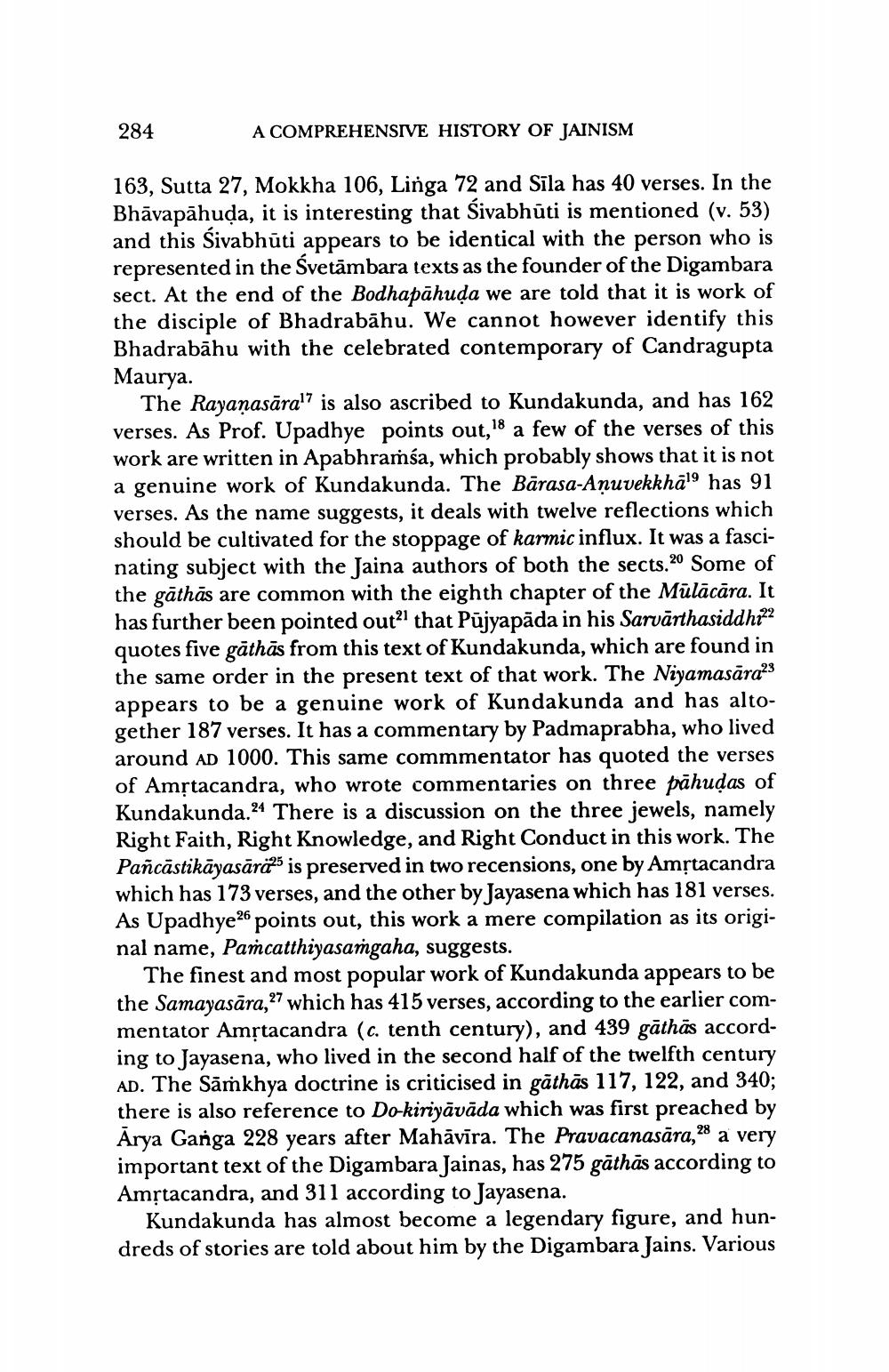________________
284
A COMPREHENSIVE HISTORY OF JAINISM
163, Sutta 27, Mokkha 106, Linga 72 and Sīla has 40 verses. In the Bhāvapāhuda, it is interesting that Śivabhūti is mentioned (v. 53) and this Sivabhūti appears to be identical with the person who is represented in the Svetāmbara texts as the founder of the Digambara sect. At the end of the Bodhapāhuda we are told that it is work of the disciple of Bhadrabāhu. We cannot however identify this Bhadrabāhu with the celebrated contemporary of Candragupta Maurya.
The Rayaņasāra!is also ascribed to Kundakunda, and has 162 verses. As Prof. Upadhye points out,18 a few of the verses of this work are written in Apabhraíśa, which probably shows that it is not a genuine work of Kundakunda. The Bārasa-Anuvekkhālo has 91 verses. As the name suggests, it deals with twelve reflections which should be cultivated for the stoppage of karmic influx. It was a fascinating subject with the Jaina authors of both the sects.20 Some of the gāthās are common with the eighth chapter of the Mülācāra. It has further been pointed outal that Pūjyapāda in his Sarvārthasiddhi22 quotes five gāthās from this text of Kundakunda, which are found in the same order in the present text of that work. The Niyamasāraa appears to be a genuine work of Kundakunda and has altogether 187 verses. It has a commentary by Padmaprabha, who lived around AD 1000. This same commmentator has quoted the verses of Amộtacandra, who wrote commentaries on three pähudas of Kundakunda.24 There is a discussion on the three jewels, namely Right Faith, Right Knowledge, and Right Conduct in this work. The Pancāstikāyasārä5 is preserved in two recensions, one by Amrtacandra which has 173 verses, and the other by Jayasena which has 181 verses. As Upadhye26 points out, this work a mere compilation as its original name, Païcatthiyasaṁgaha, suggests.
The finest and most popular work of Kundakunda appears to be the Samayasara, 27 which has 415 verses, according to the earlier com mentator Amrtacandra (c. tenth century), and 439 gāthās according to Jayasena, who lived in the second half of the twelfth century AD. The Samkhya doctrine is criticised in gāthās 117, 122, and 340; there is also reference to Do-kiriyāvāda which was first preached by Arya Ganga 228 years after Mahāvīra. The Pravacanasāra, 28 a very important text of the Digambara Jainas, has 275 gāthās according to Amstacandra, and 311 according to Jayasena.
Kundakunda has almost become a legendary figure, and hundreds of stories are told about him by the Digambara Jains. Various




